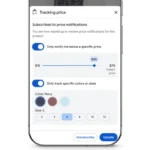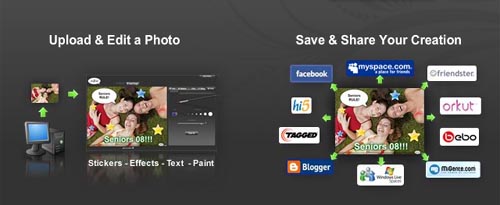Click here to buy secure, speedy, and reliable Web hosting, Cloud hosting, Agency hosting, VPS hosting, Website builder, Business email, Reach email marketing at 20% discount from our Gold Partner Hostinger You can also read 12 Top Reasons to Choose Hostinger’s Best Web Hosting
Hide AI-Generated Images in DuckDuckGo can clear the clutter when every time you search for a genuine photo, piles of AI‑made visuals—aka “AI slop”—bury the results you really want. That endless scroll of synthetic images doesn’t just slow you down; it saps trust in your search engine. DuckDuckGo’s new “Hide AI-Generated Images” toggle cuts through the noise, letting you control whether AI content appears in your image searches.
Create inspirational images from the top AI generators. Simply enter a subject, They’ll apply styles, and you’ll tweak the one you like.
What’s New: A Clean Sweep of AI Slop
DuckDuckGo has rolled out a dedicated setting to exclude AI‑generated images from your search results. You can:
- Open the Images tab after any search.
- Select the “AI images” dropdown.
- Choose “Hide” to filter out AI content (or “Show” to restore it).
Alternatively, you can enable the filter globally in your search settings under “Hide AI-Generated Images.” This setting relies on manually curated, open‑source blocklists—most notably the “nuclear” list from uBlockOrigin and the uBlacklist Huge AI Blocklist—to detect and suppress synthetic visuals.
Comet an AI-Powered Web Browser Delivers 7 Tab‑Busting Productivity Hacks
Why This Matters: Hide AI-Generated Images in DuckDuckGo to Cut Through the ‘AI Slop’
The internet’s libraries of photos, diagrams, and infographics are increasingly polluted by AI‑spun media. High‑quality originals get lost in a sea of low‑effort generative images, making it harder for researchers, designers, and casual browsers alike to locate authentic content.
- User Frustration: Professionals complain that AI visuals crowd out genuine references.
- Misinformation Risk: AI images can misrepresent reality or context.
- Trust Erosion: Users begin doubting the relevance and accuracy of search results.

By giving users the power to hide AI-generated images, DuckDuckGo is responding directly to these pain points—and reinforcing its “private, useful, and optional” philosophy.
Turn Photos into Videos in Gemini in Under 1 Minute: A Step‑by‑Step
A Fresh Spin: Community‑Driven Filter Curation
Unlike black‑box AI detectors, this filter uses transparent, community‑maintained blocklists. Contributors across GitHub continuously update lists of known AI‑only sites and generators. This crowdsourced approach offers:
- Agility: New AI generators are added to blocklists in real time.
- Transparency: Anyone can inspect or suggest changes to the lists.
- Portability: The same lists work with uBlockOrigin, uBlacklist, and even Pi‑Hole integrations.
Real‑World Use Case: The “Baby Peacock” Debacle
Last year, Google came under fire when searching “baby peacock” returned mostly AI-composed illustrations, with few real photos. Researchers, educators, and bird enthusiasts complained that factual information was overshadowed by stylized AI art.
With DuckDuckGo’s filter, users searching “baby peacock” can now:
- Quickly toggle off synthetic images.
- Find authentic wildlife photography unhindered.
- Save time and gain confidence in their results.
How Google Gemini Veo 3 Video Generation Model Goes Global and What It Means for Creators
What Else Is on the Horizon?
DuckDuckGo hints at future filtering options—potentially extending beyond images into AI-generated summaries, ads, or chatbot answers. While details are scarce, the company’s commitment to user‑driven AI controls could set a new standard across search engines and browsers
How this AI Graphic-Design Agent Replaces an $82k/yr Graphic Designer (N8N)
Key Takeaways
- Full Control: Users can toggle AI images on/off directly within the Images tab.
- Community‑Powered: The filter uses open‑source blocklists, updated by contributors.
- Reduced “AI Slop”: Cuts out low‑quality, generative images to surface authentic content.
- Privacy‑First: Aligns with DuckDuckGo’s ethos—AI features are private, useful, and optional.
How to Convert Images to PDF in 3 Simple Steps
FAQs
Q1: Does the filter catch every AI‑generated image?
No—while it significantly reduces the volume, no filter can catch 100% of AI content. Continuous updates to the blocklists improve coverage over time.
Q2: Can I apply this filter on mobile?
Yes, both DuckDuckGo’s mobile browser and its extension support the “Hide AI-Generated Images” setting in their search preferences.
Q3: Where can I find the blocklists?
The “nuclear” blocklist is available on GitHub at the uBlockOrigin/HUGE‑AI‑Blocklist repository, and works seamlessly with uBlockOrigin and uBlacklist.
Q4: Will other search engines adopt similar filters?
DuckDuckGo’s move could spur competitors to introduce user‑controlled AI filters—watch for updates from major search providers in the coming months.
Conclusion
DuckDuckGo’s Hide AI-Generated Images feature is a timely answer to growing concerns over synthetic media overload. By empowering users with transparent, community‑maintained filters, it reasserts the importance of authenticity and trust in search.
Try it today: Head to DuckDuckGo’s Images tab, flip the “AI images” switch, and rediscover genuine photos in an instant. And if you’re passionate about web quality, consider contributing to the open‑source blocklists on GitHub.
Now loading...






